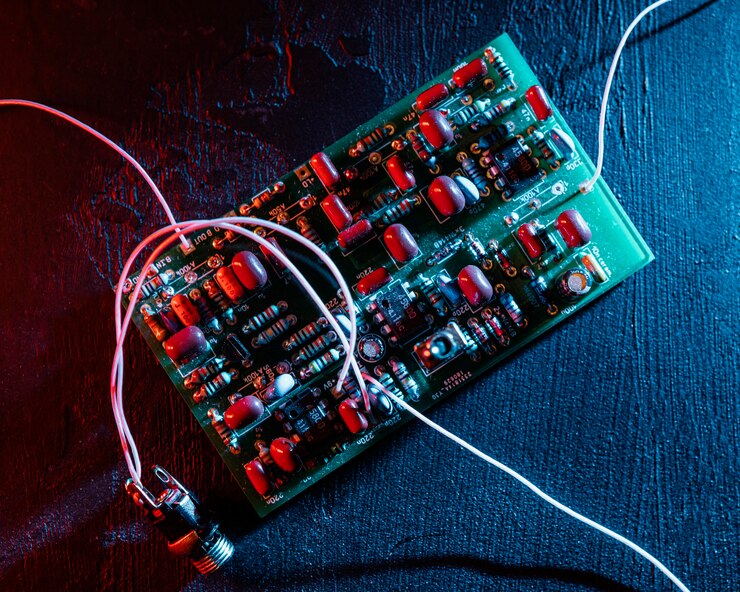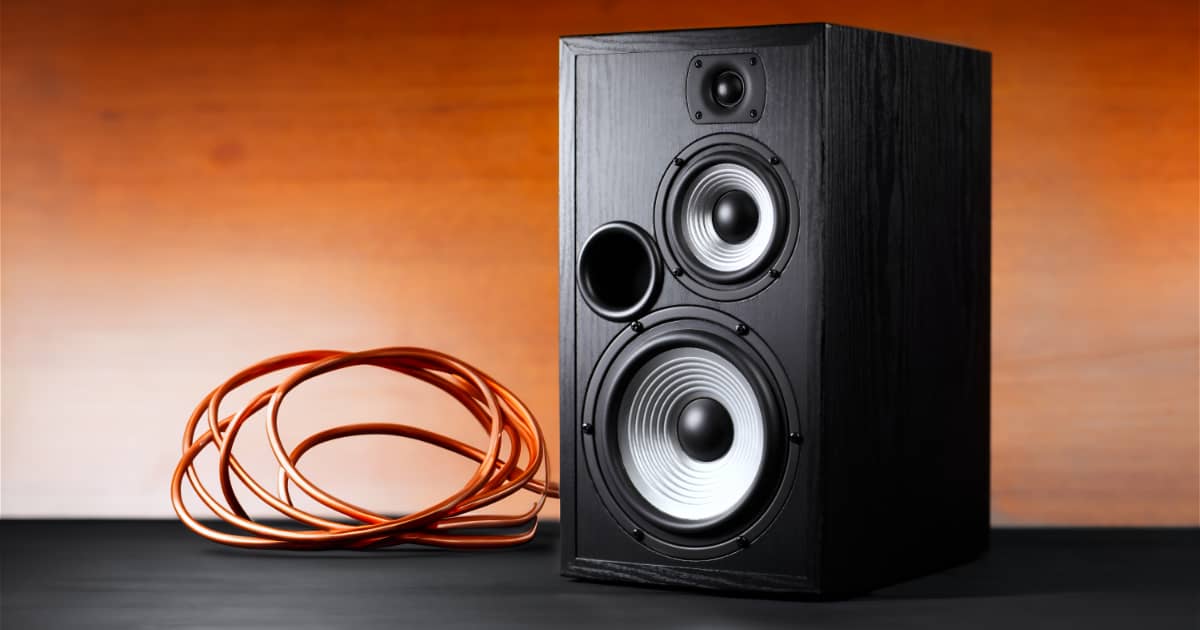A 4-wire speaker can be converted to a 2-wire configuration. When connecting a 4-wire speaker to a 2-wire system, the process involves combining the positive and negative terminals of the speaker, then connecting these combined wires to the positive output terminal of the 2-wire system, while connecting the remaining wire to the negative output terminal.
This allows for proper audio signal transmission and ensures compatibility between a 4-wire speaker and a 2-wire system. By following these steps, you can easily convert a 4-wire speaker to a 2-wire configuration without any complications. Knowing how to make this conversion can come in handy when dealing with different speaker systems and setups.
Step 1: Gathering The Necessary Tools And Materials
In step one of converting a 4-wire speaker to 2-wire, gather the necessary tools and materials. Ensure you have all the required equipment before proceeding with the process.
Before you start connecting your 4-wire speaker to a 2-wire setup, make sure you have the following tools and materials ready:
- Speaker wires: Ensure you have the appropriate gauge and length of speaker wires for your setup. The gauge refers to the thickness of the wire, with lower gauge numbers indicating thicker wires. Thicker wires are typically used for longer distances or higher power applications.
- Wire cutters/strippers: These tools will come in handy to cut and strip the insulation from the speaker wires. Cutters will help trim the wire to the desired length, while strippers will remove the outer insulation to expose the inner conductors.
- Screwdriver: Depending on your specific speaker and amplifier setup, you may need a screwdriver to connect the wires securely. Make sure you have the right type and size for the job.
- Multimeter (optional): While not essential, a multimeter can be useful for testing continuity and verifying correct connections. This tool measures voltage, resistance, and continuity to ensure accurate wiring.
Now that you have all the necessary tools and materials, you’re ready to move on to the next step!
Step 2: Properly Disconnecting The Bi-Wire Connections
Disconnecting the bi-wire connections properly is a crucial step when converting a 4 wire speaker to 2 wire. Ensure that you follow the necessary procedures to avoid any damage or sound quality issues.
When it comes to transitioning from a bi-wire speaker configuration to a 2-wire setup, it’s important to follow the proper steps to ensure a seamless transition. In this step, we will guide you through the process of disconnecting the bi-wire connections.
Identifying The Bi-Wiring Clips/Jumpers
To properly disconnect the bi-wire connections, you first need to identify the bi-wiring clips or jumpers. These clips or jumpers are usually metal plates or bridges connecting the two sets of speaker terminals. Look for them on the back of your speakers or in your speaker’s user manual.
Removing The Bi-Wiring Clips/Jumpers:
To proceed with removing the bi-wiring clips or jumpers, follow these steps:
- Carefully inspect the speaker terminals and identify the clips or jumpers connecting the two sets of terminals.
- Use your fingers or a suitable tool to gently remove the bi-wiring clips or jumpers. Be cautious not to damage the terminals or any other components while doing so.
- Ensure that you remove all the clips or jumpers on each speaker that is a part of the bi-wiring setup.
By removing the bi-wiring clips or jumpers, you are effectively disconnecting the additional wire paths in a bi-wire configuration. This step is essential to transition to a 2-wire setup.
Remember, proper care and attention should be given while disconnecting the bi-wire connections to avoid any damage to your speakers or their components. Once you have successfully removed the bi-wiring clips or jumpers, you can move on to the next step of the process.
In the next section, we will discuss the third step, which involves connecting the speaker wire to your speakers in a 2-wire configuration. Stay tuned to learn how to complete this step effortlessly.
Step 3: Reconnecting The Speaker Wires
To reconnect the speaker wires in a 4-wire speaker to 2-wire configuration, follow step 3. This process ensures proper audio connectivity for your system.
Now that you have prepared the wire ends, it’s time to reconnect the speaker wires. Follow these simple steps to ensure a proper connection:
Preparing the wire ends:
- Strip the insulation: Use wire strippers to remove the insulation from the ends of the speaker wires, exposing about half an inch of bare wire.
- Twist the wire strands: If you see multiple strands within the wire, gently twist them together to create a solid, single wire end.
Connecting the wires to the appropriate terminals:
- Identify the positive and negative terminals: Most speakers have markings to indicate which terminal is positive (+) and which is negative (-).
- Attach the wires to the terminals: Insert the bare wire ends into the corresponding terminals. Make sure the positive wire connects to the positive terminal and the negative wire connects to the negative terminal.
- Secure the connection: If your speakers have screw terminals, tighten the screws to hold the wires in place. If the terminals are spring-loaded, make sure the wires are firmly inserted.
Remember to repeat these steps for each speaker in your setup to ensure all wires are correctly connected. Double-check each connection to avoid any mix-ups.
By following these steps, you can easily reconnect the speaker wires and enjoy your audio system once again.

Step 4: Testing The Speaker Connection
To test the connection of a 4-wire speaker to a 2-wire setup, follow step 4 by conducting a thorough speaker test. Make sure to check for any issues or inconsistencies in the audio output to ensure a proper connection.
Before finalizing the speaker connection, it’s important to test whether everything is set up correctly. This step will ensure that you have a proper audio output and there are no issues with the wiring connection. Follow the instructions below to test the speaker connection.
Using A Multimeter To Check For Continuity:
- Set the multimeter to the continuity mode.
- Touch the positive lead of the multimeter to one wire and the negative lead to another wire.
- If the multimeter beeps or shows a reading close to zero, it indicates that there is continuity and the wires are properly connected.
- Repeat this process for all the wires to confirm continuity.
Verifying Proper Audio Output:
- Connect the speaker wires to the appropriate amplifier or receiver terminals.
- Play some audio through the connected device.
- Make sure the audio is coming out of the speakers and at the expected volume.
- Test the audio with different types of content, such as music and spoken word, to ensure all frequencies are properly reproduced.
By following these steps, you can ensure that your 4 wire speaker is properly connected to a 2 wire system. Testing the speaker connection is crucial to ensure proper audio output and to troubleshoot any potential issues.
Frequently Asked Questions Of 4 Wire Speaker To 2 Wire
How Do I Connect A 4 Wire Speaker To A 2 Wire System?
To connect a 4 wire speaker to a 2 wire system, you can use a speaker wire adapter or splice the wires together. Check the colors of the wires and match them accordingly. Alternatively, consult the user manual or contact customer support for assistance.
Can I Use A 2 Wire Speaker With A 4 Wire System?
Yes, you can use a 2 wire speaker with a 4 wire system. Simply connect the corresponding wires from the 2 wire speaker to the appropriate terminals on the 4 wire system. Make sure to match the polarity correctly for proper sound reproduction.
What Are The Advantages Of Using A 4 Wire Speaker?
Using a 4 wire speaker allows for better audio quality and enhanced performance. It provides improved signal stability, resulting in clearer sound reproduction and reduced signal loss. Additionally, a 4 wire speaker can handle higher power levels, making it suitable for high-fidelity audio setups.
Can I Convert A 4 Wire Speaker To A 2 Wire Speaker?
It is not recommended to convert a 4 wire speaker to a 2 wire speaker as it may lead to compatibility issues and compromise the audio quality. Instead, consider using a suitable adapter or consult a professional to ensure a proper connection and optimal performance.
Conclusion
To summarize, converting a 4 wire speaker to 2 wire is a simple yet effective solution to improve audio quality and compatibility. By following the necessary steps, such as identifying and connecting the positive and negative terminals correctly, you can ensure a seamless transition.
It is important to keep in mind the impedance ratings and ensure they are compatible with your amplifier to prevent any damage. Additionally, using a thicker gauge wire can also help maintain the integrity of the signal. Overall, this modification allows for greater versatility and ease of use when connecting your speakers to different audio systems.
With these tips and precautions in mind, you can confidently adapt your speaker wiring to suit your specific needs without compromising on sound quality.

